SAP Plant Maintenance
Filter By
Browse By
- SAP Analytics and AI
- SAP Application Development and Integration
- All SAP Application Development and Integration
- SAP ABAP
- SAP ABAP Development Tools
- SAP ABAP Test Cockpit
- SAP API Management
- SAP BAPI
- SAP Basis
- SAP BRF
- SAP Business Application Studio
- SAP CMS
- SAP Design Studio
- SAP Development Tools
- SAP DevOps
- SAP EAI
- SAP EDI
- SAP Extension Suite
- SAP Fiori
- SAP Fiori Elements
- SAP Integration Suite
- SAP Low Code Application Development
- SAP Low Code Automation
- SAP Netweaver
- SAP Release Management
- SAP UI5
- SAP Web Application Server
- SAP Web IDE
- SAP Business Process Management
- SAP Center of Excellence
- SAP CIO
- SAP Customer Experience
- SAP Data and Data Management
- All SAP Data and Data Management
- SAP BW
- SAP BW/4HANA
- SAP Crystal Reporting
- SAP Data Archiving
- SAP Data Center
- SAP Data Governance
- SAP Data Integration
- SAP Data Migration
- SAP Data Quality
- SAP Data Services
- SAP Data Strategy
- SAP Data Visualization
- SAP Data Warehouse Cloud
- SAP DMS
- SAP Document Control
- SAP EIM
- SAP ETL
- SAP ETL Tools
- SAP HANA
- SAP HANA Administration
- SAP HANA Deployment Infrastructure
- SAP HANA Studio
- SAP Master Data
- SAP Master Data Governance
- SAP MDM
- SAP Enterprise Architect
- SAP Enterprise Asset Management
- SAP ERP
- SAP Finance
- All SAP Finance
- SAP Accounting
- SAP AR AP
- SAP Asset Accounting
- SAP Billing Systems
- SAP BPC
- SAP BRIM
- SAP Cash Management
- SAP Central Finance
- SAP Controlling
- SAP COPA
- SAP Cost Center Accounting
- SAP e-invoicing
- SAP FICO
- SAP Finance Automation
- SAP Financial Closing Cockpit
- SAP Financial Consolidation
- SAP Financial Planning
- SAP FX Risk
- SAP General Ledger
- SAP Global Tax Management
- SAP Hyperion
- SAP Order to Cash
- SAP Payment Processing
- SAP Profitability Analysis
- SAP Rebate Management
- SAP S/4HANA Finance
- SAP Universal Journal
- SAP Governance Risk and Compliance
- SAP Human Capital Management
- SAP Intelligent Technologies
- SAP Platform and Technology
- All SAP Platform and Technology
- SAP Business Technology Platform
- SAP Cloud Connector
- SAP Cloud Integration Platform
- SAP Cloud Migration
- SAP Cloud Platform
- SAP Cloud Providers
- SAP Cloud Strategy
- SAP Container Platform
- SAP Digital Asset Management
- SAP Digital Integration Hub
- SAP Digital Signature
- SAP HANA Enterprise Cloud
- SAP HEC
- SAP Hyperscalers
- SAP Infrastructure
- SAP Messaging
- SAP Smart Forms
- SAP Quality and Testing
- SAP Security
- SAP Spend Management
- SAP Supply Chain Management
- All SAP Supply Chain Management
- SAP APO
- SAP Asset Management
- SAP Business Network
- SAP Digital Manufacturing Cloud
- SAP Digital Twin
- SAP EWM
- SAP IBP
- SAP Inventory Management
- SAP Label Printing
- SAP Logistics
- SAP Manufacturing
- SAP Manufacturing Automation
- SAP MES
- SAP MII
- SAP MM
- SAP MRO
- SAP MRP
- SAP Order Management
- SAP Plant Maintenance
- SAP PLM
- SAP Production Planning
- SAP S&OP
- SAP SD
- SAP SPM
- SAP Supply Chain Planning
- SAP Track and Trace
- SAP Transportation Management
- SAP System Administration
Plant Maintenance Defined
Plant maintenance is the service and repair of assets and equipment. During normal operations, plant equipment will experience wear and tear that require maintenance. This can include scheduled or non-scheduled maintenance. Types of maintenance can include preventative, predictive, corrective, and shutdown maintenance. Master data is essential for equipment, locations, catalogs, bill of materials, and counters like wear and tear. Automation allows a plant to identify, document, manage, and execute maintenance to streamline the process while managing labor and recording costs.
SAP Plant Maintenance
Key Components of SAP Plant Maintenance include:
- Inspection: Reviewing the condition of the systems or equipment.
- Preventive Maintenance: Maintaining ideal conditions of the systems or equipment.
- Repair: Restoring the systems or equipment.
Plant Maintenance Defined
Plant maintenance is the service and repair of assets and equipment. During normal operations, plant equipment will experience wear and tear that require maintenance. This can include scheduled or non-scheduled maintenance. Types of maintenance can include preventative, predictive, corrective, and shutdown maintenance. Master data is essential for equipment, locations, catalogs, bill of materials, and counters like wear and tear. Automation allows a plant to identify, document, manage, and execute maintenance to streamline the process while managing labor and recording costs.
SAP Plant Maintenance
Key Components of SAP Plant Maintenance include:
- Inspection: Reviewing the condition of the systems or equipment.
- Preventive Maintenance: Maintaining ideal conditions of the systems or equipment.
- Repair: Restoring the systems or equipment.
Four groups of users that benefit from plant maintenance are:
- Operations Managers: Obtain metrics, improve decision making, and plan budgeting.
- Production Line Workers: Manage maintenance issues promptly and effectively.
- Maintenance Personnel: Improve work processes and efficiency by reviewing maintenance records.
- Purchasing Departments: Purchase parts and services.
3 goals are to:
- Maximize availability of plant operations through planned maintenance.
- Extend the life span of the plant, equipment, and machinery by minimizing the wear and tear.
- Reduce the cost of down time due to improper maintenance.
The importance of plant maintenance is to keep machinery, parts, and equipment in good operating condition to avoid any production downtime. Keeping the maintenance at top of mind can help control expenses and keep accurate budgeting.
Vendor partners to support your plant maintenance include: Thales, Forcam, and SAP .
Key Considerations for SAPinsiders are:
- Improve the Efficiency of Your SAP Plant Maintenance Operations by Automating Master Data Processes. This whitepaper outlines an approach to improve operation efficiency through SAP data management.
- How to Use Data Collection to Run a Remote Warehouse. Robert Brice explains how to rethink traditional approaches to data collection and process operations in your
- Discover SAP’s Approach to Intelligent Asset Management: The convergence of EAM and APM. Explore business capabilities and asset lifecycle management needs.
1252 results
-

Analyzing Sensor Data in SAP HANA in Real Time
Published: 07/June/2017
Reading time: 27 mins
The following solution design for applications allows for the combination of real-time sensor data with data from other sources within SAP HANA. The architecture is based on the SAP Manufacturing Integration and Intelligence (SAP MII) and SAP Plant Connectivity technologies. This flexible architecture enables the consumption of data from any system that collects sensor data...…
-

How to Use Transfer Prices for Intercompany Inventory Transfers with Standard Functionality
Published: 25/August/2015
Reading time: 39 mins
Learn how to design a standard SAP solution to meet the business requirement to implement transfer prices or arm’s-length prices between intercompany, parent, or subsidiary inventory transfers. The main business reason for using transfer prices is to ensure that an organization having multiple affiliate companies is not manipulating income taxes by setting up prices over...…
-

Best Practices to Implement a Maquiladora Process in a Global SAP System Implementation
Published: 04/December/2017
Reading time: 13 mins
Learn how to effectively implement the maquiladora (also referred to as maquila) process using the best design practices in your global SAP system implementation. Discover the complex processes on maquiladora in your supply chain management, take away lessons learned in maquiladora implementations, and know how to automate the maquiladora transactions in the SAP system. Key...…
-
-

Cater to Arm’s Length Standards with Automated Intercompany Transfer Pricing Design
Published: 19/October/2010
Reading time: 18 mins
Understand the pricing technique you can use in your SAP system to cater to IRS and EU arm’s length transfer pricing guidelines. Avoid double taxation on cross-country and jurisdiction transfers in an intercompany value chain. Follow configuration and master data checklists as well as two sample process flows that illustrate the technique. Key Concept Intercompany...…
-

Calculate Actual Costs Across Multiple Company Codes Using a New Business Function in SAP Enhancement Package 5 for SAP ERP 6.0
Published: 01/December/2010
Reading time: 17 mins
The material ledger records the flow of goods from the initial purchase of the raw material to the final sale of the finished product. It assigns any price differences incurred during purchasing and production to the product sold — or at least it does provided that the goods flow remains within a single company code....…
-

Plants Abroad Eases Country-Specific Tax Reporting
Published: 15/March/2007
Reading time: 13 mins
When setting up an SAP system in new countries, one of the most difficult parts is setting up the correct tax system. Part of the tax system in SAP can be the Plants Abroad functionality. See under which circumstances you might want to start using Plants Abroad and the legal requirements that can affect your...…
-

Improve The Efficiency Of Your SAP Plant Maintenance Operations By Automating Master Data Processes
Published: 06/March/2020
Reading time: 1 min
If you work for an organization that manages your maintenance operations with SAP’s plant maintenance module, this eBook is for you. It outlines a proven approach for improving operational efficiency through smart SAP data management. You’ll learn how to empower your maintenance teams to automate and streamline the creation and maintenance of equipment, materials, maintenance…
-
-

How to Manage a Distribution Plan in a Supply Chain Model in SAP APO When Supply Exceeds Demand
Published: 08/May/2017
Reading time: 20 mins
Learn the process flow and understand the various strategies you can use to carry out deployment of supply elements (receipts) in SAP Advanced Planning and Optimization (SAP APO) when the total supply is greater than the available demand. Key Concept Deployment basically determines which distribution requirements can be met by the supply (receipt elements). Deployment...…
-

Centralize and Simplify SAP Solution Maintenance Across Your System Landscape with the Maintenance Optimizer — An
Published: 15/January/2008
Reading time: 34 mins
Manager SAPexperts/IT Keeping your SAP solutions up-to-date across development, test, and production landscapes is a daunting task, and the growing number of applications, functionalities, and integrated technologies only adds to the challenge. SAP Solution Manager 4.0 introduces the Maintenance Optimizer, a tool that centralizes and simplifies solution maintenance across your entire landscape — it detects...…
-

Cut Logistics Costs by Enhancing Inter-Company Procurement
Published: 15/February/2009
Reading time: 10 mins
Discover how to extend and automate inter-company procurement so it meets business needs that require the use of more than two company codes. Key Concept Standard inter-company procurement refers to the cross-company movement between two companies, such as a large corporation with different holding companies in various parts of the world doing in-house movement of...…
Become a Member
Unlimited access to thousands of resources for SAP-specific expertise that can only be found here.
Upcoming Events
-

Mastering SAP Collaborate an SAP TechEd on Tour event
November 12 - 14, 2025
Sydney, New South Wales
Australia
View Event
Related Vendors
Your request has been successfully sent

